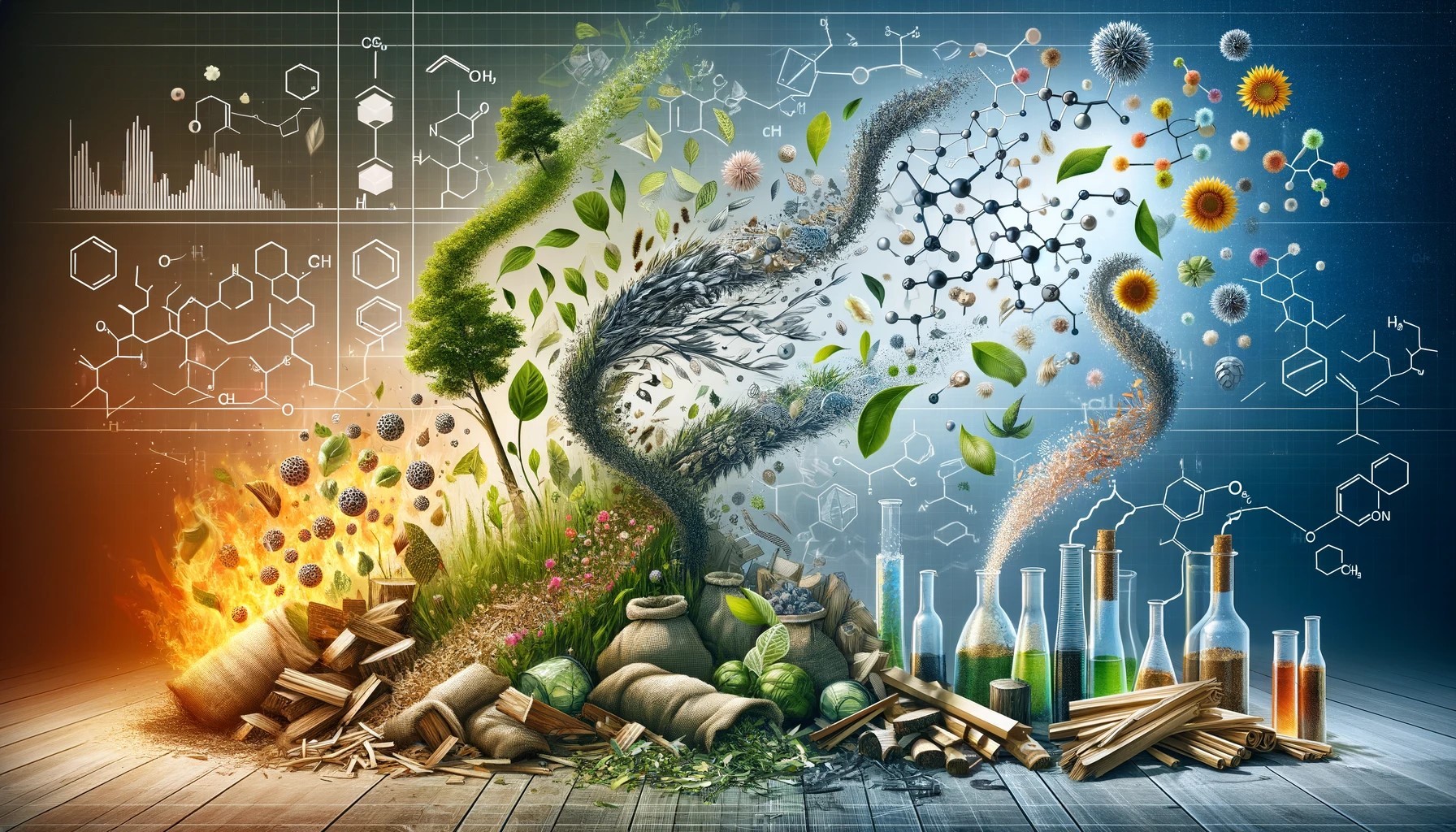Environment
Innovative Enzyme Research Unveils New Paths to Carbon-Neutral Biofuels
A collaborative research effort reveals a groundbreaking method to break down plant cellulose, offering a new horizon in the production of renewable biofuels and biomaterials
Feb 7, 2024
[DALL-E]
In an era increasingly defined by the quest for sustainable alternatives to fossil fuels, a collaborative effort by scientists at Lawrence Berkeley National Laboratory (Berkeley Lab), Lawrence Livermore National Laboratory (LLNL), and UC Davis is offering a glimpse into a potentially transformative future. Their research, centered on converting plant residues into valuable commodities like biofuels, chemicals, and medicines, was recently highlighted in the journal Green Chemistry.
The team's focus is cellulose, a key structural component in plants that, despite its abundance, has proven challenging to break down into useful sugars. These sugars are essential for microbes to synthesize a range of products, offering a pathway to carbon-neutral solutions. As Tina Jeoh, a UC Davis professor and project co-leader, articulates, "We want to utilize plant residues, and there is a lot of plant waste out there. These sugars are key to establishing a bioeconomy built on cycling renewable carbon for biofuel, biochemical, and biomaterial alternatives to fossil fuel-sourced versions."
At Berkeley Lab's Synchrotron Infrared Structural Biology (BSISB) Imaging Program, a novel technique combining microfluidic devices and infrared spectroscopy has been developed to scrutinize the process of cellulose degradation. This approach offers real-time insights into the workings of cellulose-degrading enzymes.
Understanding cellulose's structure is crucial. Composed of glucose molecules linked by covalent bonds and organized into fibrils, these structures are further stabilized by hydrogen bonds, which, scientists believe, impede the efficiency of cellulose-chopping enzymes.
To demystify this process, Berkeley Lab researchers, including Hoi-Ying Holman, a senior scientist and BSISB director, have crafted an experimental system leveraging the Advanced Light Source's (ALS) powerful infrared beam. "Until now, the enzymatic hydrolysis of cellulose was a challenging biochemical process to study, in part due to limitations in researchers' ability to carefully control and observe the sample environment during cellulose depolymerization," explains Holman.
Their findings confirm that the hydrogen bonds in cellulose do act as barriers to enzymatic action. This revelation is pivotal for the future of biomanufacturing, as Jeoh and her team at UC Davis now explore methods to expedite the enzymatic breakdown of these bonds, aiming to enhance efficiency and reduce costs.
Beyond biofuels, the implications of this research are vast. LLNL scientists plan to apply this approach to the study of biomolecules in diverse contexts, including biosecurity. Holman, elucidating the significance of their approach, notes, "This technology is the result of many years of research and development work carried out by BSISB staff to create systems for studying reactions using infrared spectromicroscopy."
The team's work, epitomizing the intersection of innovative technology and scientific inquiry, not only illuminates the path to more efficient biofuel production but also stands as a beacon, guiding the way toward a future where renewable resources are harnessed to their fullest potential.


















